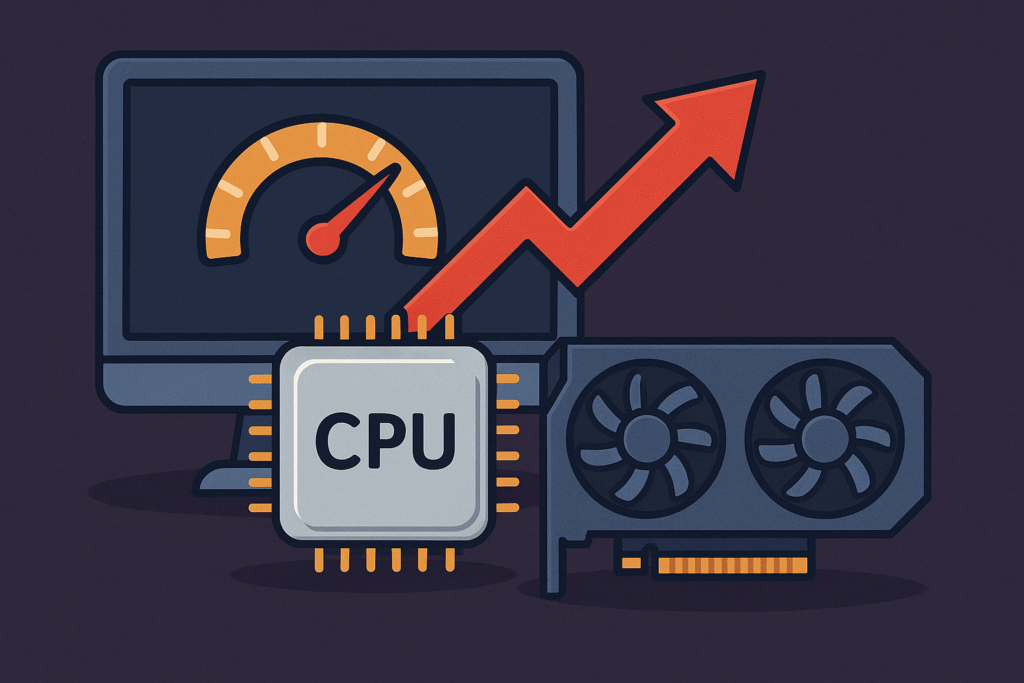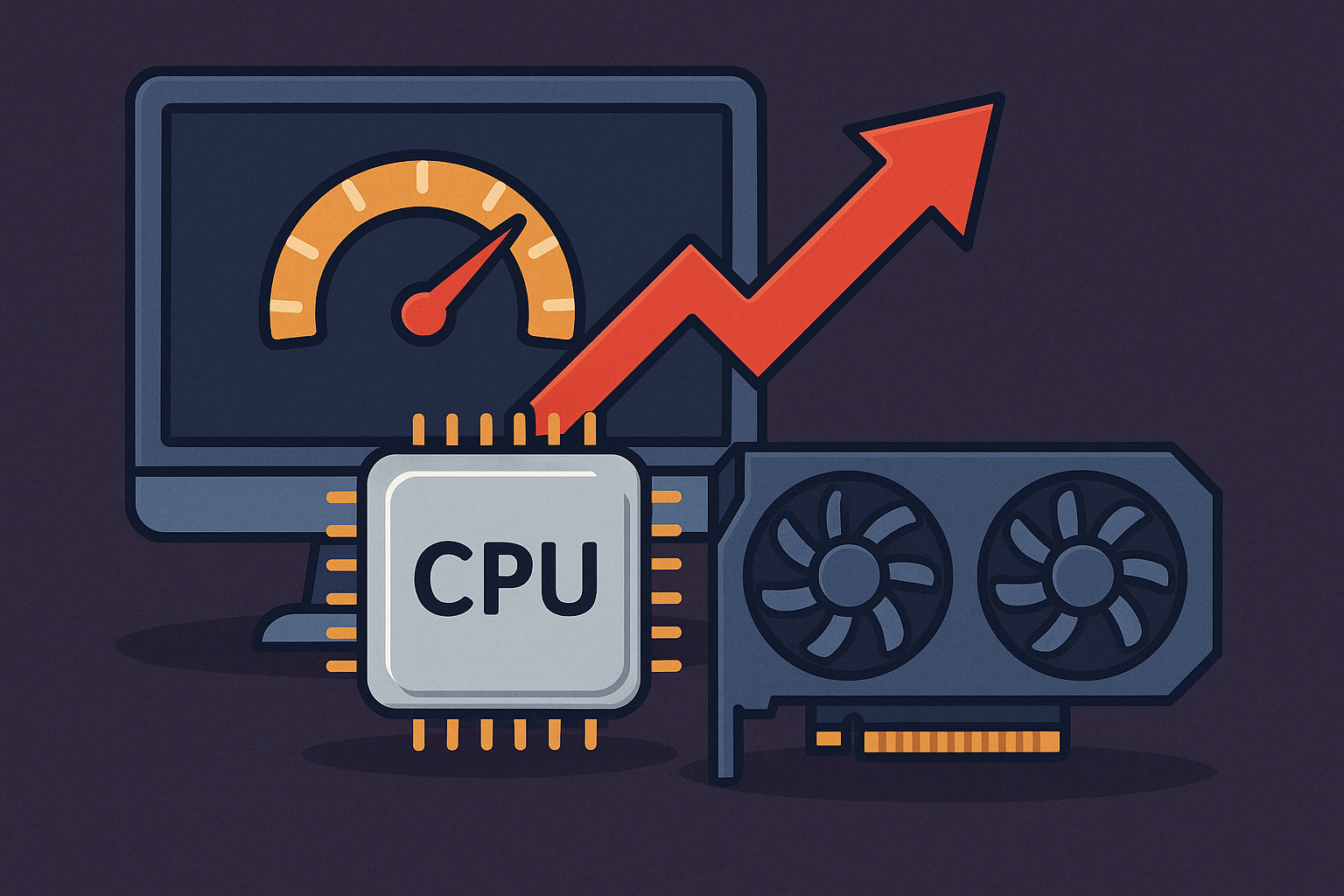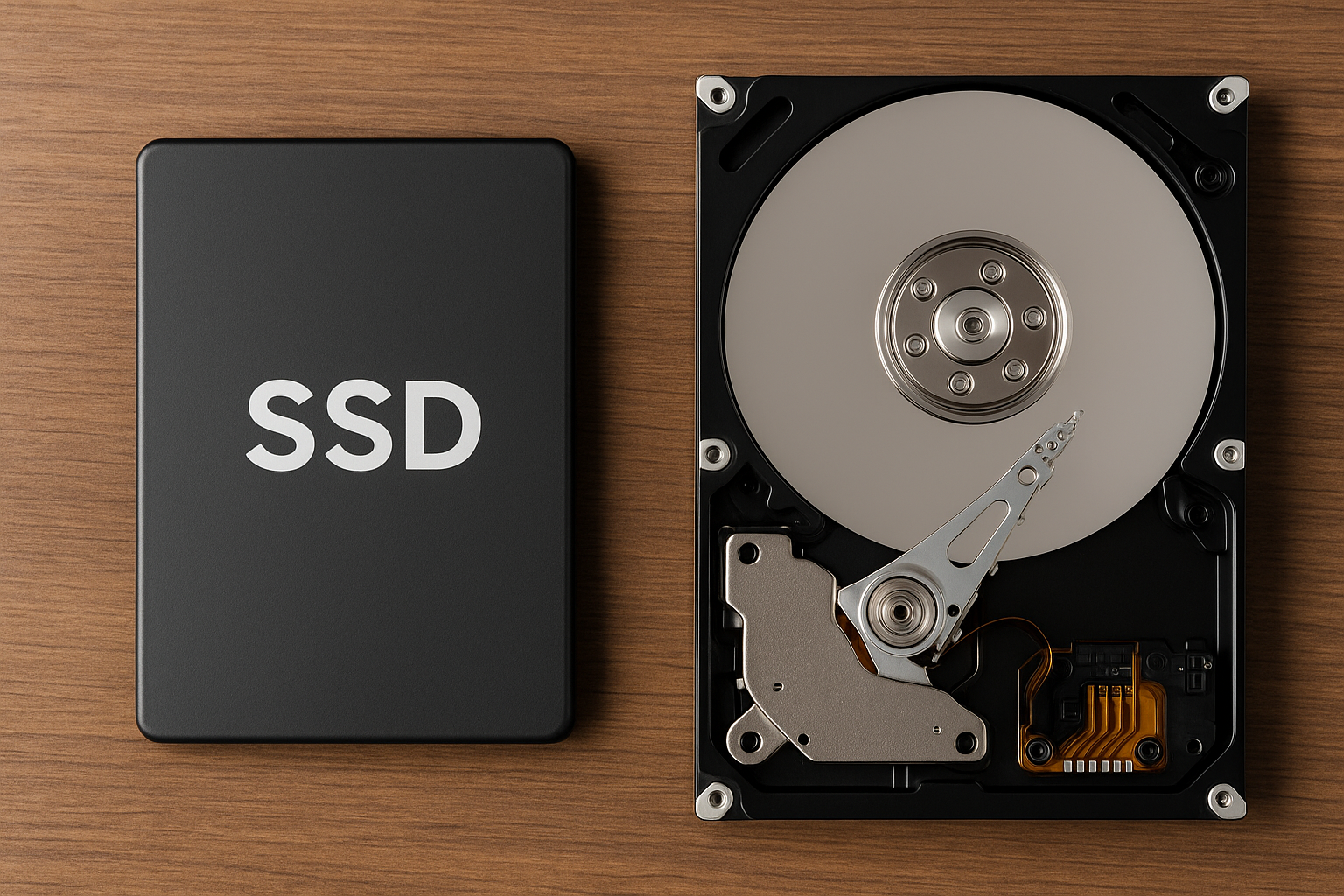If you’re into gaming, video editing, or building your own PC, you’ve probably heard the term overclocking. For some, it’s a way to squeeze more power out of their hardware without spending extra money. For others, it’s a risky venture that could damage components or void warranties.
In this detailed guide, we’ll break down what overclocking is, how it works, the pros and cons, and most importantly—when it’s actually worth doing.
What Is Overclocking?
Overclocking refers to the process of increasing the clock speed of a computer component—typically the CPU, GPU, or RAM—beyond the manufacturer’s default specification. This means making the component run faster than intended, in order to boost performance.
Each processor has a default clock speed measured in gigahertz (GHz), which determines how many operations it can perform per second. When you overclock, you’re telling the processor to operate at a higher frequency than that base speed.
Common components that can be overclocked:
- CPU (Central Processing Unit)
- GPU (Graphics Processing Unit)
- RAM (Random Access Memory)
- Monitors (refresh rates)
- Motherboard chipsets (with limits)
How Overclocking Works
At its core, overclocking involves adjusting settings in the BIOS or using specialized software to manually increase the clock multiplier or base frequency. This gives the component more processing power—but also generates more heat and demands higher voltage.
To prevent damage, most users install aftermarket cooling solutions (like liquid cooling systems or high-performance air coolers) and closely monitor temperature and stability.
Essential steps involved in overclocking:
- Access BIOS/UEFI settings during system boot.
- Locate the CPU multiplier or base clock options.
- Gradually increase the frequency (in small steps).
- Save and reboot the system.
- Run stress tests (e.g., Prime95 or AIDA64) to verify stability.
- Monitor temperatures using tools like HWMonitor or Core Temp.
Pros of Overclocking
Overclocking offers a number of benefits, especially for users who want to maximize performance without upgrading hardware.
1. Improved Performance
You can expect noticeable performance gains in:
- Gaming (higher frame rates)
- Video rendering and 3D modeling
- Software compilation
- Heavy multitasking
2. More Value for Your Money
Overclocking lets you stretch the performance of a lower-end CPU or GPU, giving you near high-end results without paying premium prices.
3. Customization and Control
It appeals to tech enthusiasts who love tinkering, benchmarking, and fine-tuning every component.
4. Better Longevity for Aging PCs
If your computer is getting older but still functional, overclocking can give it a temporary performance boost.
Cons and Risks of Overclocking
While overclocking sounds attractive, it’s not without drawbacks and potential dangers.
1. Overheating
Running components at higher speeds increases heat output. Without sufficient cooling, you risk thermal throttling, crashes, or permanent damage.
2. Shortened Lifespan
Increased voltage and thermal stress may reduce the lifespan of the CPU or GPU.
3. System Instability
If not done correctly, overclocking can cause:
- Blue screens of death (BSOD)
- App crashes
- Data corruption
4. Void Warranties
Most manufacturers void the warranty if damage occurs due to overclocking.
5. Increased Power Consumption
A higher clock speed demands more energy, which can increase electricity costs and strain your PSU (power supply unit).
When Is Overclocking Worth It?
Let’s explore scenarios where overclocking makes sense—and when it doesn’t.
✅ It’s worth it if:
- You’re into competitive gaming and want every frame per second.
- You’re using applications that benefit from multi-threaded performance, like Adobe Premiere, Blender, or CAD software.
- You understand the risks and have invested in high-end cooling.
- You enjoy tweaking and experimenting with hardware.
- You’re building a budget PC and want to get the most out of mid-range parts.
❌ It’s not worth it if:
- You use your PC for casual tasks (browsing, Netflix, email).
- You have a laptop (cooling is limited and hardware is locked).
- You rely on system stability for work or critical tasks.
- You don’t have proper cooling and power supply.
- Your components are locked (e.g., Intel CPUs without “K” series, OEM motherboards).
What Hardware Supports Overclocking?
Not all hardware is designed for overclocking. Before you dive in, check if your setup supports it.
CPUs
- Intel: Only “K” and “KF” series (e.g., i5-12600K, i7-13700KF)
- AMD: Ryzen series generally support overclocking
Motherboards
- Intel: Only Z-series chipsets (e.g., Z790)
- AMD: B and X series (e.g., B550, X570)
GPUs
- Most NVIDIA and AMD GPUs allow basic overclocking via tools like MSI Afterburner
RAM
- Look for XMP (Extreme Memory Profile) or DOCP settings to boost RAM speeds safely
Tools for Overclocking
BIOS/UEFI
The most direct way to overclock, but requires technical knowledge.
Software options:
- MSI Afterburner (for GPU)
- Intel Extreme Tuning Utility (XTU)
- AMD Ryzen Master
- CPU-Z and GPU-Z (for monitoring)
- HWMonitor (for temperature and voltage tracking)
- Cinebench and 3DMark (for benchmarking)
Overclocking Myths Debunked
Myth 1: Overclocking Always Brings Massive Gains
Reality: Gains can vary. Some chips overclock better than others (called the “silicon lottery”).
Myth 2: You’ll Instantly Fry Your PC
Reality: Modern CPUs have thermal protections that throttle performance or shut down the system before serious damage occurs.
Myth 3: Overclocking Is Too Complicated
Reality: With modern software, it’s easier than ever—though still requires caution and testing.
Real-World Performance Examples
Here’s a quick look at potential gains with overclocking:
| Component | Default Speed | Overclocked Speed | Performance Boost |
|---|---|---|---|
| Intel i5-12600K | 3.7 GHz | 4.8 GHz | +15-20% in tasks |
| AMD Ryzen 5 5600X | 3.7 GHz | 4.6 GHz | +10-15% in gaming |
| NVIDIA RTX 3060 | 1320 MHz | 1800 MHz | +5-10 FPS in games |
Note: These results vary depending on cooling, chip quality, and system configuration.
Safety Tips Before Overclocking
- Always research your hardware first
- Start with small increments
- Run stress tests after each change
- Monitor temps continuously
- Use quality cooling and power supplies
- Don’t overvolt excessively
Final Thoughts: Should You Overclock?
Overclocking is a fun and practical way to extend the capabilities of your PC—when done properly. It offers real-world performance gains, especially in gaming and productivity tasks.
However, it’s not for everyone. If your system is already fast enough for your needs, or you value rock-solid stability over pushing limits, you might be better off leaving your components at their factory settings.
But if you’re a tech enthusiast with the right gear and curiosity, overclocking can be a rewarding adventure.








